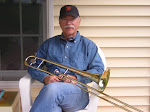I enjoy shopping in Japan but not for any reason you might suppose. The smallest bill here is the ¥1,000 note which is roughly equivalent to a $10 bill in the US. So the fact that the Japanese use coins for the equivalent of our $1 and $5 bills means that you get a lot more change in coins here. Change is called “O tsuri” (おつり) in Japanese and that is where the fun begins for me. You see, as a kid I was a paperboy, which meant that I collected from my customers in cash every Thursday and so was constantly making change and could easily wind up with several pounds of coinage in my pocket as the route progressed. After that I worked in a department store for a couple years and ran a cash register. This was back in the late 60’s when people actually paid in cash and so I was constantly receiving cash and making change. Anyway, as a result of all that I am really good at making change.
Now, some of you may remember that “back in the day” it was common that if an amount ended in odd cents that the customer would often pay in such a way as to get back “even money.” For those of you who have no idea of what I am talking about, say you buy something here for ¥471. You can give the cashier one ¥500 coin and you will receive 7 coins in change. (2X¥10 + 1X¥5 + 4X¥1= total ¥29. There are no “quarters” here) But if you give the cashier ¥521 you will get 1, ¥50 coin in change. It used to be that the cash registers didn’t do the math for you and it was actually kind of fun because it required some smarts on both ends of the transaction to make “even money” happen. These days in the US this whole process is basically unknown. You give the salesperson your money and the register calculates the change and sometimes even dispenses it to you. Anyway, I’m good at making change and, for some reason, the Japanese, young and old, are also great change-makers. Whether one shops at the local convenience store, vegetable stand or buys an obento lunch out of the back of some guy’s van most everyone you deal with has that skill and admires it in others. If the transaction described above were actually to take place downstairs in the gift shop the clerk would most likely give you a knowing smile as she handed you your ¥50 coin. Sometimes if I’m not really paying attention and just drop even money on the cashier she may politely ask if I have ¥?? so she can give me even money in change. I have also had the store clerk fish through my proffered handful of coins to accomplish the same thing. So next time you buy something at Starbucks work it so the kid can give you back even money and see if he “gets it.” Or, just give him your Starbucks card!
Now, some of you may remember that “back in the day” it was common that if an amount ended in odd cents that the customer would often pay in such a way as to get back “even money.” For those of you who have no idea of what I am talking about, say you buy something here for ¥471. You can give the cashier one ¥500 coin and you will receive 7 coins in change. (2X¥10 + 1X¥5 + 4X¥1= total ¥29. There are no “quarters” here) But if you give the cashier ¥521 you will get 1, ¥50 coin in change. It used to be that the cash registers didn’t do the math for you and it was actually kind of fun because it required some smarts on both ends of the transaction to make “even money” happen. These days in the US this whole process is basically unknown. You give the salesperson your money and the register calculates the change and sometimes even dispenses it to you. Anyway, I’m good at making change and, for some reason, the Japanese, young and old, are also great change-makers. Whether one shops at the local convenience store, vegetable stand or buys an obento lunch out of the back of some guy’s van most everyone you deal with has that skill and admires it in others. If the transaction described above were actually to take place downstairs in the gift shop the clerk would most likely give you a knowing smile as she handed you your ¥50 coin. Sometimes if I’m not really paying attention and just drop even money on the cashier she may politely ask if I have ¥?? so she can give me even money in change. I have also had the store clerk fish through my proffered handful of coins to accomplish the same thing. So next time you buy something at Starbucks work it so the kid can give you back even money and see if he “gets it.” Or, just give him your Starbucks card!









